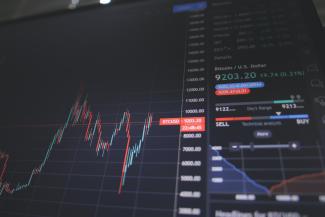
Market Update for July 27, 2023
As I write this post, the S&P 500 index stands less than 5% from the all-time closing high of 4,802 achieved on January 2, 2022. However, government-reported inflation is about 9% since that previous high (using this calculator), and real life inflation if you consider excluded items like groceries and fuel is much higher than even that. The Federal Reserve raised their Fed Funds rate another 0.25% yesterday, after pausing at the previous meeting for the first meeting in over a year. It is a good time to be a conservative investor or saver, with many money market and CD yields above 5% for the first time since the 2008 financial crisis period. It is a bad time to owe money on a credit card or potentially to be looking for a house, with higher interest rates affecting both and a severe national and local lack of inventory creating bidding wars for single-family homes. The economy as a whole has been extremely resilient, as has the job market, and this flies in the face of many doom-and-gloom projections for a 2023 recession, the likelihood of which seems de minimis at the current juncture.
Bonds are having a fairly benign, "normal” year after a harrowing 2022, with one broad performance measure clocking in at +2.60% year-to-date vs. last year’s -13.02% bloodbath. Charles Dickens’ opening line from A Tale of Two Cities “it was the best of times, it was the worst of times…” is not apropos for this market and economy - I would refer instead to "Goldilocks and the Three Bears" and give the Federal Reserve credit for getting interest rate increases largely “just right,” after clearly starting out behind the inflation problem with their first rate increase March 17, 2022. Usually, good first-halves of the year portend strong second-halves, and I hope that is the case in 2023. From that article: “In general, stock market gains in the first half of the year tend to be followed by more gains in the third quarter and second half of the year. Looking at median performance over the past 75 years or so, Bespoke found that the S&P 500 tends to jump nearly 5% in the second half of the year. But in years when the index gained 10% or more in the first six months, the S&P 500 typically soared around 10% in the second half.”

